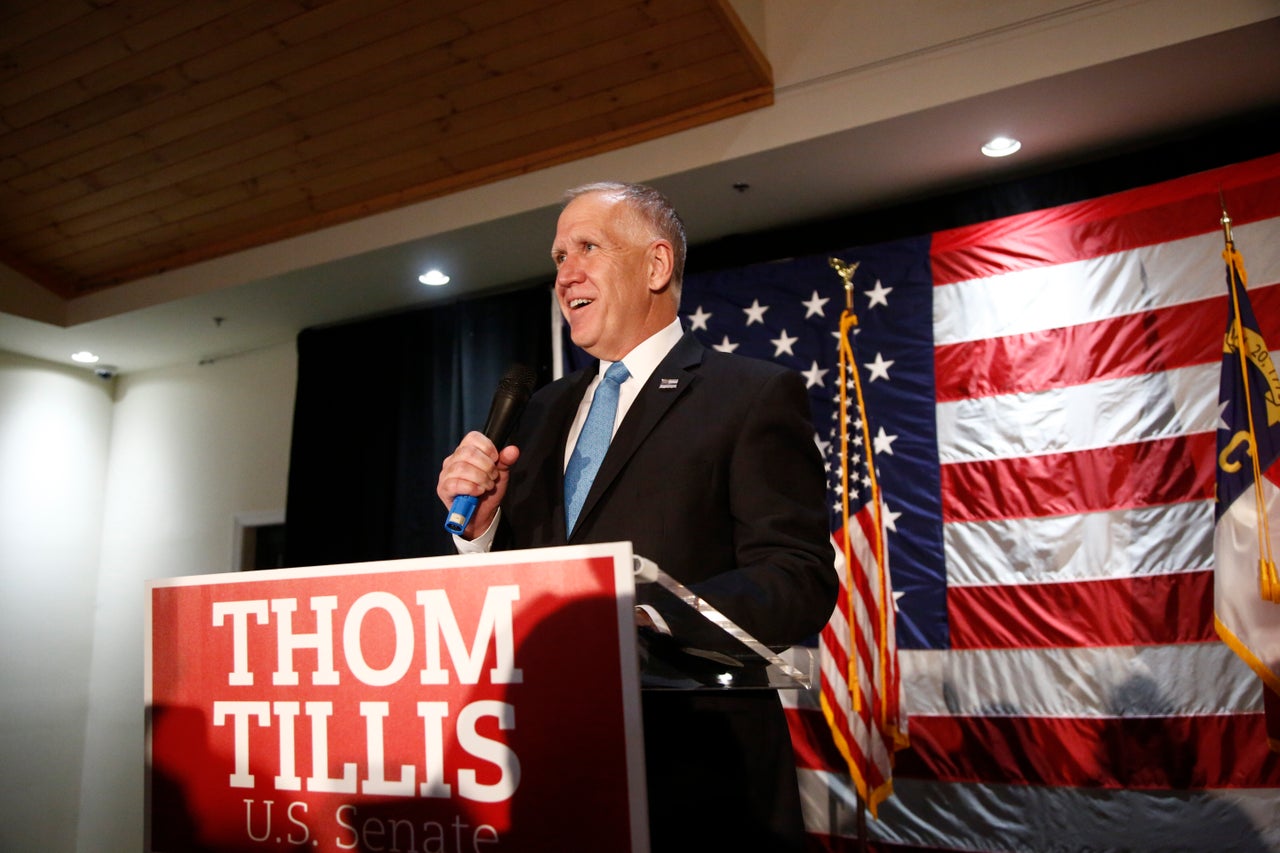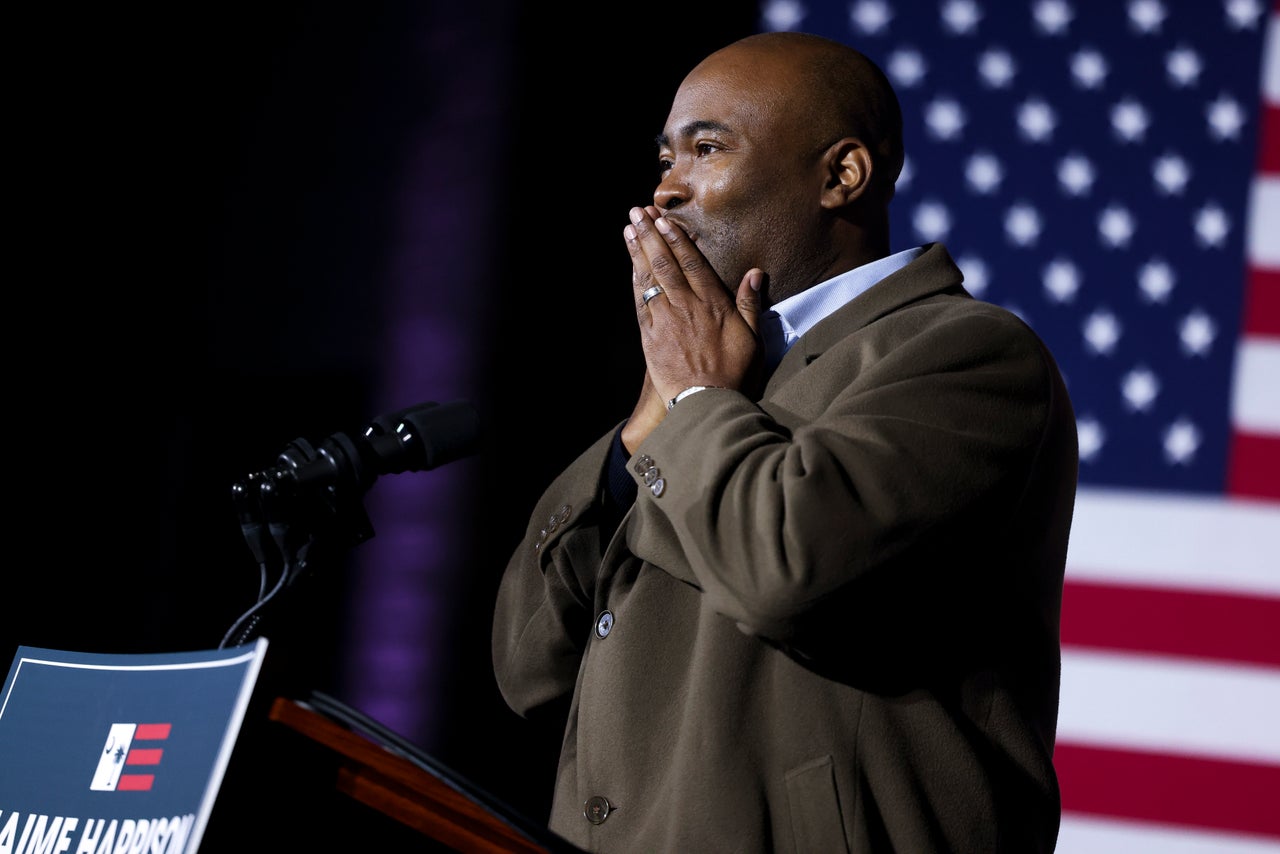Maine House Speaker Sara Gideon had led GOP Sen. Susan Collins in polls ― public and private, Republican and Democratic ― for months. Her likely victory over the longtime incumbent was a key building block in Democrats’ plan to retake the Senate after six years in the minority.
But in the final weeks of the 2020 election, Democrats started to worry. Their internal polls showed Collins not only fighting back, but closing the gap with Gideon. In the days leading up to the election, Senate Minority Leader Chuck Schumer (D-N.Y.) called other members, warning them Gideon may lose. Republicans saw a similar uptick, though many still thought Gideon would triumph after Maine’s ranked-choice voting process.
Instead, Collins romped, winning 51% of the vote to Gideon’s 42%. Even if the ranked-choice voting process had eliminated two independent candidates, Gideon likely only would have reached about 47%.
Republicans and Democrats working on Senate races quickly reached the same, somewhat unexpected conclusion. The death of Supreme Court Justice Ruth Bader Ginsburg ― which both sides thought would hurt Collins’ chances by reminding Maine voters of her unpopular decision to back Brett Kavanaugh’s Supreme Court confirmation in 2018 ― instead gave her a renewed chance to highlight her independence with her vote against the nomination of Justice Amy Coney Barrett, persuading enough swing voters to cast ballots for both her and Democratic presidential nominee Joe Biden.
Senate Democrats entered the fall riding high. While only two of the states they were targeting ― Colorado and Maine ― voted for Democratic presidential nominee Hillary Clinton four years earlier, they believed they had created a map of almost unprecedented breadth. With the help of millions of dollars of grassroots fundraising, Republican-leaning states from Alaska to Montana were in play, and swing states like North Carolina and Arizona seemed to be trending in the Democratic direction.
Super PACs allied with Senate Majority Leader Mitch McConnell (R-Ky.) agreed with their wallets, pouring tens of millions of dollars into defending incumbents like Lindsey Graham in South Carolina and Steve Daines in Montana.
Democrats still have a chance at winning the Senate, where before the election they had a 53-47 disadvantage. They’ve won two states ― Colorado and Arizona ― while suffering an expected loss in Alabama. But their once-optimistic chances have now faded dramatically, reliant on either a miracle win in Alaska or on sweeping two runoff elections scheduled for January in Georgia.

Collins’ unexpected comeback in Maine is only one part of a story of how Democrats’ boldest Senate dreams crumbled ― a story that also involves sex scandals, late breaks and massive polling errors ― ultimately culminating in a wipeout in key states fueled by ultra-high Trump-powered turnout.
“I was hoping that we would sweep to victory with a number of Senate wins,” former Colorado Gov. John Hickenlooper, a Democrat who defeated GOP Sen. Cory Gardner, said on MSNBC on Wednesday. “It’s not the level of excitement I was hoping to wake up to.”
By August, a once-narrow Democratic path to the Senate majority had opened up, buoyed by the successful Democratic recruitment of candidates like Hickenlooper, Montana Gov. Steve Bullock, astronaut Mark Kelly in Arizona and party-switching state Sen. Barbara Bollier in Kansas. Even candidates who began with a lower profile, like real estate developer Theresa Greenfield in Iowa, former Democratic National Committee official Jaime Harrison in South Carolina and former state Sen. Cal Cunningham in North Carolina, had made their races competitive.
“We found a lot of candidates who were uniquely good for their states and for this environment,” Justin Barasky, a senior adviser at the Democratic Senatorial Campaign Committee, said in an interview the day before the election. “Republicans underestimated these campaigns and these candidates.”
But each side pursued different strategies. Republicans largely developed individualized attacks for each Democratic opponent, often using opposition research. They attacked Iowa’s Theresa Greenfield over her business record, and unsuccessfully attempted to tie Kelly to the Chinese government.
Democrats relentlessly hammered incumbent Republicans, regardless of state, for supporting the repeal of the Affordable Care Act and its protections for people with preexisting conditions. The head of the major Senate GOP super PAC, Senate Leadership Fund, conceded the ads had a significant impact.
“If you were to turn your TV on in every state in the country that had a competitive Senate race, you would see exactly the same ad run by every Democratic candidate, every Democratic outside group and the DSCC,” Steven Law said. “Our data suggests the Democratic attacks were particularly effective there.”
Law said Republicans would need to address the issue. “We’re going to have to do more in that vein,” he said of legislation protecting preexisting conditions. “You’re foolish if you think [these attacks are] just going to evaporate.” But he also wondered if Democrats were too reliant on a few key issues and whether their attacks would “become an over-chewed piece of gum by the time the election came around.”
Democrats were confident voters would punish the GOP for recklessness on a key issue. “These senators, the ones who actually were elected, all won in 2014 on an ACA repeal strategy,” Barasky said. “They had six years to come up with a replacement. None of them did.”
The low point for Senate Republicans essentially matched the low point for the president they ran alongside ― President Donald Trump’s off-the-walls performance in the first presidential debate, followed by the president’s coronavirus illness. GOP candidates’ standing in the polls plummeted. Over the week that followed, Republican groups would reserve $20 million worth of air time in three solidly GOP states ― South Carolina, Kansas and Alaska.

Million-dollar donations would keep coming throughout the final weeks, according to Federal Election Commission records. After raising $90 million in September, Senate Leadership Fund would bank $1 million from a coal executive on Oct. 2; $2 million from the National Association of Realtors on Oct. 6; $5 million from banking fortune heir Timothy Mellon on Oct. 9; a matching $5 million from hedge fund manager Ken Griffin on Oct. 14.
Along with record fundraising from the National Republican Senatorial Committee ― it raised $275 million this cycle, smashing a previous record of $155 million ― the cash would prove crucial to fending off Democratic candidates powered by record-breaking grassroots fundraising.
In the midst of Trump’s personal battle with coronavirus, Republicans got their first break. A conservative website, then mainstream newspapers in North Carolina, reported that Cunningham had exchanged sexual texts with a married woman. Cunningham, a former military lawyer, had long led the unpopular Tillis by narrow margins, even running ahead of Biden.
The affair gave Republicans hope of upsetting that dynamic. Tillis’ campaign, along with outside groups, would run more than a dozen ads highlighting it in the closing weeks of the race as Cunningham dodged the press. Public surveys showed Cunningham’s image tanking, even if he held onto a small lead in the polls.
The GOP always had a clear advantage in most other states on the map. “We have, to some extent now, a home field advantage,” Law acknowledged. “We have states that mostly trend Republican in presidential elections.”
Voters in these states reverted to form. GOP internal polling showed that as voters across the board became more aware Biden was likely to win the presidency in the final weeks, it became harder for Democratic candidates to win over the Republicans and conservative-leaning independents they needed to win. The chance to compete slipped away from Democrats in Kansas and Montana. Greenfield’s advantage over Ernst in Iowa ― one poll showed the Democrat winning 10% of Trump voters ― evaporated.
The four major groups spending on Senate races ― The Democratic Senatorial Campaign Committee and Senate Majority PAC for Democrats, plus the National Republican Senatorial Committee and Senate Leadership Fund for the GOP ― put a combined $660 million into Senate races across the country. In the end, roughly $152 million of that total went to races that were decided by 10 percentage points or more, according to data from OpenSecrets.
By the final weeks of the race, it was clear at least some of this money ― never mind the tens of millions Democrats raised from grassroots donors ― was heading straight into the political furnace. Amy McGrath raised nearly $100 million for a race neither the GOP nor Democrats thought was a key battleground. In South Carolina, Democrat Jaime Harrison desperately began to air multiple ads boosting Constitution Party candidate Bill Bledsoe, hoping to lower the bar he needed to clear to defeat Graham.
Republicans were particularly baffled by the $20 million two Democratic groups ― Senate Majority PAC and Future Forward ― poured into the Texas Senate race with only weeks left in the election. The GOP was never worried about defending Sen. John Cornyn, who eventually defeated Democrat M.J. Hegar by 10 percentage points ― 5 points ahead of Joe Biden in the state.
Republicans turned out in surprisingly high numbers across the map, dooming Greenfield, Bullock, Bollier and Harrison’s efforts in GOP-leaning states. Cunningham’s bruised image meant he ran behind Biden, who is narrowly losing in North Carolina, instead of ahead of him. Collins topped Gideon.
Before the results were known, Law ― a top ally of McConnell ― was asked if he thought Democrats had made any major mistakes over the course of the election cycle. He had a few critiques, like suggesting they had wasted money boosting Cunningham during his primary, but mostly thought they pursued the correct strategy.
“I felt like they played their hand fairly smartly,” Law said.
